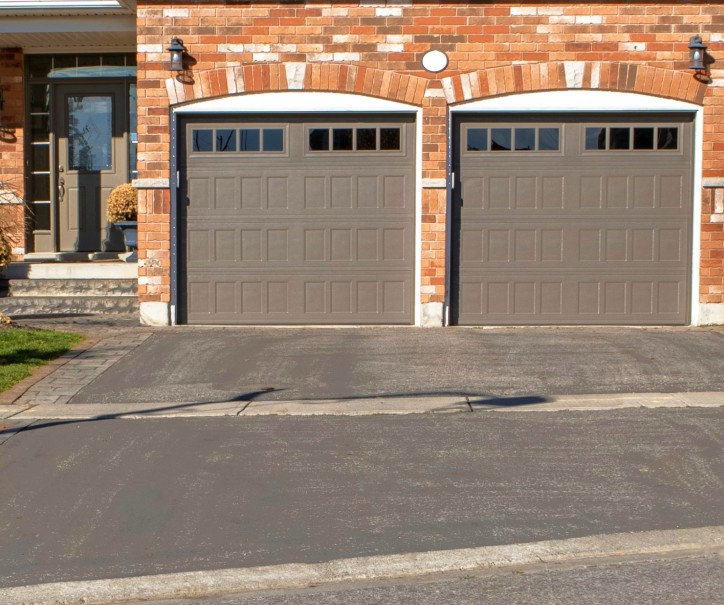Busy roads face constant pressure from vehicles, causing them to wear down much faster than quieter roads.
Unless these surfaces are properly maintained, they can quickly develop defects. These compromise safety, drive up costs and lead to major disruptions for road users.
But regular road treatments aren’t resilient enough to withstand heavy wear.
Instead, managing busy roads requires specialised high-traffic road surface treatments designed to provide the necessary durability.
With proper planning, you can extend road surface lifespan even under heavy use and save money on frequent repairs and resurfacing.
For expert support, contact Hazell & Jefferies Ltd to arrange high-traffic road surface treatments in Oxfordshire, Berkshire, Reading and the wider UK.
Key takeaways:
When we talk about high-traffic roads, we don’t just mean places with a lot of cars.
The term covers all sorts of surfaces that continuously experience heavy wear.
That includes:
As well as the number of vehicles, the weight of those vehicles also plays a crucial role in road surface wear.
Heavy goods vehicle (HGV) fleets, buses and delivery lorries create far more stress on a road than regular cars. That’s doubly true in locations where vehicles are often braking, turning or idling.
For local authorities, businesses and private estate owners, these high-traffic roads need careful attention.
Neglecting them risks accelerated wear, higher maintenance costs and more serious safety concerns for drivers, cyclists and pedestrians.
The continual movement of vehicles across busy roads puts those surfaces under a lot of stress.
This increases the speed at which ruts, cracks and potholes form.
Even small defects worsen quickly under use, leading to widespread deterioration.
Large, heavy vehicles put far greater strain on road surfaces than cars.
Their weight is particularly damaging at stopping and turning points like junctions, roundabouts and bus lanes.
That’s because frequent braking and sharp manoeuvres in these surfaces intensify the stress on the underlying asphalt and tarmac.
Rain, frost and heat already test the resilience of any road. That’s why seasonal timing matters in public roadworks.
But the effect is magnified in high-traffic zones.
Moisture can seep into cracks caused by pressure. And freezing conditions expand them into potholes.
In summer, heat softens asphalt, which then deforms more quickly under heavy loads.
Surface damage in busy areas creates immediate risks for road users.
Drivers face uneven or slippery conditions. Cyclists might be forced into traffic to avoid potholes. And pedestrians can be put in danger when surfaces fail near crossings or walkways.
These safety risks leave little margin for error, making proper highway maintenance for busy roads of the utmost importance.
Find out more: Signs a road surface needs to be replaced: A comprehensive guide
General-purpose surfacing performs adequately on quieter local roads.
But it struggles to cope with the constant stress of heavy traffic.
In busy areas, these standard treatments wear out quickly, leading to cracks, potholes and premature failure.
Frequent resurfacing of high-volume traffic areas also drives up costs and causes repeated disruptions for businesses, residents and road users.
True value comes from investing in high-traffic surface treatments that are specifically designed for intense wear.
By choosing solutions that withstand heavy loads and continuous use, you can extend road surface lifespans, improve safety and reduce the overall cost of maintenance.
One of the most widely used preventative treatments is surface dressing, which delivers excellent value and durability.
This process involves applying a layer of bitumen followed by stone chippings to improve skid resistance and protect the surface against water penetration.
Surface dressing is a proven method for protecting road substructures, slowing deterioration and extending road surface lifespan by up to 10 years.
It’s much more cost effective than full resurfacing. And you can apply it up to 3 times before resurfacing becomes necessary.
Regular road surface dressing is vital for maintaining heavy-traffic roads where small cracks and minor defects can quickly escalate into larger problems.
Oil and fuel spills are a common problem in high-traffic areas like car parks, industrial estates and service roads.
Over time, these substances soften and weaken the asphalt, reducing the overall strength of the surface and increasing the likelihood of failure.
Surface sealing adds a protective layer that prevents contaminants from penetrating the materials.
As well as protecting asphalt from oil and fuel, the sealcoat also shields against weather damage.
So you can have confidence in a long-lasting, low-maintenance surface that delays the need for roadworks in busy areas.
Standard asphalt often isn’t strong enough to withstand the heavy stress of high-traffic areas.
But heavy-duty asphalt paving mixes are designed specifically to cope with these challenges.
By using modified binders and carefully selected aggregates, these mixes deliver enhanced strength, flexibility and resistance to rutting and cracking.
Heavy-duty asphalt surfacing is ideal for bus lanes, distribution routes and other roads carrying frequent HGV traffic.
Although they require a greater upfront investment compared to standard asphalt, heavy-duty mixes reduce the need for frequent resurfacing.
This saves money and reduces disruptions in the long term.
Loading bays, logistics hubs and industrial estates experience extraordinary demand on road surfaces.
As the material of choice for the toughest environments, concrete offers the rigidity and compressive strength needed to cope with frequent use by heavy vehicles.
Installation takes longer than asphalt. And it can be more expensive.
But the incredible durability and lifespan of concrete makes it a cost-effective option for heavy-use sites.
It’s also highly resistant to deformation and chemical spills.
When laid and maintained correctly, concrete surfaces can last for decades, making them a smart investment for critical spaces.
Not every worn or damaged road surface needs complete resurfacing, even in high-traffic areas.
Reinforcement techniques and overlay systems can strengthen existing surfaces, adding durability without the upfront cost of a full rebuild.
Councils and local authorities often use surface reinforcement overlays to extend the lifespan of motorways and other key routes while keeping closures to a minimum.
You might like: Everything you need to know about road resurfacing
Specialised treatments dramatically improve surface durability by giving roads the strength to withstand constant use and extreme conditions.
Whether it’s concrete surfacing for logistics hubs, heavy-duty asphalt for bus lanes or surface dressing for busy highways, these high-traffic road surfacing solutions help resist damage and deformation.
By extending the lifespan of your surface, you can avoid the cycle of frequent roadworks for busy areas and ensure they stay in good condition for longer.
Road safety depends on maintaining smooth, skid-resistant surfaces.
Treatments such as surface dressing improve grip, while sealing and reinforcement prevent defects that could endanger drivers, cyclists and pedestrians.
This not only creates a safer travel environment, but also reduces liability and the cost of emergency repairs.
Frequent resurfacing is one of the biggest expenses in managing busy roads.
Specialised high-traffic road surface treatments reduce how often you need to schedule resurfacing by strengthening the road’s resistance to traffic and weather.
This lowers lifecycle costs by spreading your investment over a longer period, making budgets stretch further.
Some high-traffic road surfacing treatments are more expensive upfront. But the savings you achieve by reducing downtime and the need for large-scale repairs quickly outweigh the initial cost.
Every time you schedule roadworks for busy areas, businesses lose time, commuters face delays and local communities become frustrated.
High-quality surface treatments minimise disruption by keeping roads in better condition for longer, reducing the number of closures.
And when works are necessary, the additional protections often means there’s less damage to repair. So your road surfacing contractors can complete the works more quickly.
That means less inconvenience for road users and a smoother flow of traffic across vital routes.
By reducing the need for constant repairs, you cut down on the fuel and emissions of heavy machinery.
This also lowers material use, supporting a more sustainable approach to road maintenance.
By extending service life and reducing waste, specialised high-traffic road surfacing treatments help you meet your environmental commitments while keeping roads reliable.
Busy roads, car parks and industrial estates endure a lot of wear and tear. So they need protective treatments designed to withstand heavy use.
Local authorities, businesses and private estate owners throughout the UK rely on Hazell & Jefferies Ltd for fast, efficient and affordable road surface repair and replacement.
With over 50 years’ experience delivering specialised treatments and a proven track record for public, industrial and commercial clients, we deliver reliable results that stand the test of time.
Contact us today to discuss specialised treatment for your busiest road surfaces.

